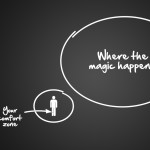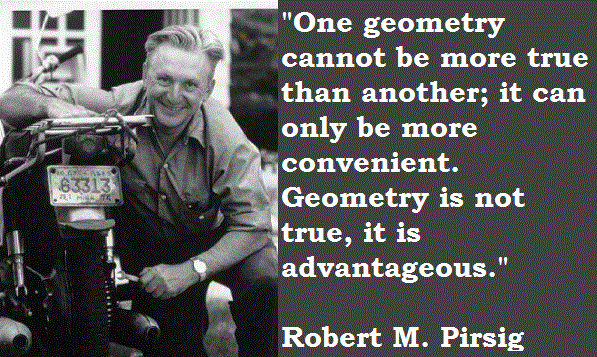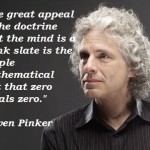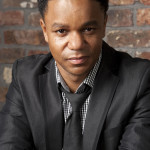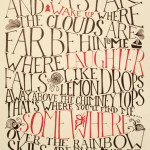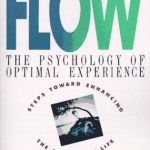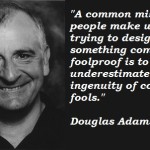“Any ape can reach for a banana, but only humans can reach for the stars.”
Neuroscientist V.S. Ramachandran is internationally renowned for uncovering answers to the deep and quirky questions of human nature that few scientists have dared to address. His bold insights about the brain are matched only by the stunning simplicity of his experiments – using such low-tech tools as cotton swabs, glasses of water and dime-store mirrors. In Phantoms in the Brain, Dr. Ramachandran recounts how his work with patients who have bizarre neurological disorders has shed new light on the deep architecture of the brain, and what these findings tell us about who we are, how we construct our body image, why we laugh or become depressed, why we may believe in God, how we make decisions, deceive ourselves and dream, perhaps even why we’re so clever at philosophy, music and art.
Some of his most notable cases:
- A woman paralyzed on the left side of her body who believes she is lifting a tray of drinks with both hands offers a unique opportunity to test Freud’s theory of denial.
- A man who insists he is talking with God challenges us to ask: Could we be “wired” for religious experience?
- A woman who hallucinates cartoon characters illustrates how, in a sense, we are all hallucinating, all the time.
Dr. Ramachandran’s inspired medical detective work pushes the boundaries of medicine’s last great frontier – the human mind – yielding new and provocative insights into the “big questions” about consciousness and the self. [From: Amazon.com]
“The human brain, it has been said, is the most complexly organised structure in the universe and to appreciate this you just have to look at some numbers. The brain is made up of one hundred billion nerve cells or “neurons” which is the basic structural and functional units of the nervous system. Each neuron makes something like a thousand to ten thousand contacts with other neurons and these points of contact are called synapses where exchange of information occurs. And based on this information, someone has calculated that the number of possible permutations and combinations of brain activity, in other words the numbers of brain states, exceeds the number of elementary particles in the known universe.”
This book presents a fascinating look at how the brain works and the unusual beliefs of people who had damage to their brains, or who had their brains remapped due to amputated limbs. Ramachandran works as a professor and director of the Center for Brain and Cognition at the University of California. The writing by Blakeslee and Ramachandran gives us, not only clear descriptions of the complex workings of the brain, but it entertains us through humor and philosophical insights as to the meaning of self, consciousness, and the mechanisms of belief. The book contains many illustrations of the brain and includes several interesting visual experiments that you can perform on yourself.
The implications of Ramachandran’s studies appear radical. Not only do they help confirm the idea that the self consists of an illusion from the interactions of many brain functions, but that our spiritual feelings of God and our sense of certainty come from the brain’s temporal lobes. (Other scientists such as Paul Maclean and Michael Persinger had also observed that spiritual sensations or a sensed presence results from probing or stimulating the temporal lobes). According to Ramachandran, pain also comes as an illusion from a construction of the brain just as any other sensory experience. Even people with missing arms or legs can feel intense pain in their phantom limbs. It appears that our body image, our sense of self, pain and sensory experience consist of maps that help us survive in the world. Ramachandran suggests the possibility that “perhaps we are hallucinating all the time and what we call perception is arrived at by simply determining which hallucination best conforms to the current sensory input.”
Ramachandran knows how to ask pertinent questions to get to the facts. Throughout this book, he examines questions, points out fallacies of past philosophers and sees features that sensations must have in order to fit the model of consciousness. He proposes that conscious sensations (qualia) must have at least three features: irrevocability (or stability), choice (the ability to make decisions), and memory. By understanding these three features, we can ask if certain actions by other animals (such as bees finding honey) or by brain damaged people have conscious awareness of their actions.
How did consciousness arrive in humans? Ramachandran sees it as a result of evolutionary and cultural pressure that interact, not only with the world around us, but with the people to whom we communicate. Both brains and culture use languages; one uses a neural language, the other a spoken language. The seat of consciousness, Ramachandran proposes, lies in the circuitry of the temporal lobes and associated limbic structures. The result of all this comes as a great irony: “that the self that almost by definition is entirely private is to a significant extent a social construct – a story you make up for others.” [From: nobeliefs.com]
“Indeed, the line between perceiving and hallucinating is not as crisp as we like to think. In a sense, when we look at the world, we are hallucinating all the time. One could almost regard perception as the act of choosing the one hallucination that best fits the incoming data.”
What would you say about a woman who, despite stroke-induced paralysis crippling the entire left side of her body, insists that she is whole and strong – who even sees her left hand reach out to grasp objects? Freud called it “denial”; neurologists call it “anosognosia.” However it may be labeled, this phenomenon and others like it allow us peeks into other mental worlds and afford us considerable insight into our own.
The writings of Oliver Sacks and others have shown us that we can learn much about ourselves by looking closely at the deficits shown by people with neurological problems. V.S. Ramachandran has seen countless patients suffering from anosognosia, phantom limb pain, blindsight, and other disorders, and he brings a remarkable mixture of clinical intuition and research savvy to bear on their problems. He is one of the few scientists who are able and willing to explore the personal, subjective ramifications of his work; he rehumanizes an often too-sterile field and captures the spirit of wonder so essential for true discovery. Phantoms in the Brain is equal parts medical mystery, scientific adventure, and philosophical speculation; Ramachandran’s writing is smart, caring, and very, very funny.
Whether you’re curious about the workings of the brain, interested in alternatives to expensive, high-tech science (much of Ramachandran’s research is done with materials found around the home), or simply want a fresh perspective on the nature of human consciousness, you’ll find satisfaction with Phantoms in the Brain. [From: Goodreads.com]
“Self-awareness is a trait that not only makes us human but also paradoxically makes us want to be more than merely human. As I said in my BBC Reith Lectures, “Science tells us we are merely beasts, but we don’t feel like that. We feel like angels trapped inside the bodies of beasts, forever craving transcendence”
In these unsettling tales from a neuroscientist every bit as quirky as the more well-known Oliver Sacks, Ramachandran sets out his beliefs that no matter how bizarre the case, empirical, strikingly simple testing can illuminate the ways brain circuitry establishes “self.” In a chatty, nearly avuncular style, he along with his coauthor, a New York Times science writer snatches territory from philosophers on how we think we know what we know. In one experiment, stroking an amputee’s cheek produces sensations in his “phantom limb” because the part of the brain’s map that once related to the lost limb has “invaded” the adjacent brain area that relates to the cheek. Unafraid to speculate, Ramachandran then moves a step closer toward indicating that the brain is not only a busy lump of genetically deemed-and-dying hard-wiring but an organ that can continuously “re-map” in response to new sensory information from the outside. Equally fascinating are Ramachandran’s “mirror tricks” on amputees and paralyzed patients that begin to reveal how much the brain relies on context and comparison as well as on “inside” neural connectivity to form self. Perhaps most disquieting are beginnings of proof that much brain activity, including what we like to think of as uniquely human behavior, happens unbidden. There may be no escape from the un-Western conclusion that self is only a limited illusion. “De-throning man,” as the author points out, is at the heart of most revolutionary scientific thought. Regrettably, his book sags in the middle as it drifts from these deft experiments into generalized musings on idiot-savants and phantom pregnancies, detracting from what is otherwise entertaining, tip-of-the-neurological-iceberg sleuthing. [From: Publishersweekly.com]
“Even though its common knowledge these days, it never ceases to amaze me that all the richness of our mental life – all our feelings, our emotions, our thoughts, our ambitions, our love life, our religious sentiments and even what each of us regards us his own intimate private self – is simply the activity of these little specks of jelly in your head, in your brain. There is nothing else.”
Insights and intriguing speculations from a neurologist whose patients provide him with unusual opportunities to explore the brain. Ramachandran’s present volume began as a “Decade of the Brain” lecture given three years ago at the annual meeting of the Society for Neuroscience. With the help of New York Times writer Blakeslee, he has expanded that address to scientists into a work of popular science for the general reader. He introduces patients with strange, sometimes extraordinary, symptoms – a man who experiences orgasms in an amputated, or phantom, foot; a woman who is convinced that her own arm must belong to her brother; stroke victims who insist they can move their paralyzed limbs; an accident survivor who believes that his parents are imposters; perfectly sane men and women with hallucinations of animals, objects, even cartoons—and then offers his ideas about what is going on in the patient’s brain that would explain such symptoms. Often he devises ingenious experiments involving mirrors, gloves, and helpful graduate students to test his ideas. The results are a new understanding of how information from different senses interacts and how the brain forms new connections and updates its model of reality in response to new sensory inputs. The wide-ranging Ramachandran also looks into the brain for clues about the mystery of autistic savants, human laughter, multiple personality disorder, religious experiences, and the very nature of the self. Besides informative drawings and images of the human brain, the text contains numerous illustrations demonstrating optical phenomena that demand reader involvement. Ramachandran, who likens himself to a sleuth and has boundless curiosity, leads readers on a riveting trail of detection. [From: Kirkusreviews.com]
“Yet as human beings we have to accept – with humility – that the question of ultimate origins will always remain with us, no matter how deeply we understand the brain and the cosmos that it creates.”
“The law of perceptual problem solving, or peekaboo, should now make more sense. It may have evolved to ensure that the search for visual solutions is inherently pleasurable rather than frustrating, so that you don’t give up too easily.”
About the Author:
Ramachandran initially obtained an M.D. at Stanley Medical College in Madras, India, and subsequently obtained a Ph.D. from Trinity College at the University of Cambridge. Ramachandran’s early work was on visual perception but he is best known for his experiments in behavioral neurology which, despite their apparent simplicity, have had a profound impact on the way we think about the brain.
Ramachandran has been elected to fellowships at All Souls College, Oxford, and the Royal Institution, London (which also awarded him the Henry Dale Medal). He gave the 2003 BBC Reith Lectures and was conferred the title of Padma Bhushan by the President of India in 2007. He has been called “The Marco Polo of neuroscience” by Richard Dawkins and “the modern Paul Broca” by Eric Kandel. Newsweek magazine named him a member of “The Century Club”, one of the “hundred most prominent people to watch” in the 21st century. [From: Goodreads.com]
“What do we mean by “knowledge” or “understanding”? And how do billions of neurons achieve them? These are complete mysteries. Admittedly, cognitive neuroscientists are still very vague about the exact meaning of words like “understand,” “think,” and indeed the word “meaning” itself.”
Now Watch His Videos:
Rama – Take the Neuron Express for a brief tour of consciousness ; TIME 1:53:20 minutes
V.S. Ramachandran -The Tell-Tale Brain: A Neuroscientist’s Quest for What Makes Us Human ; TIME 59:36 minutes
If you like this story, CLICK HERE to join the tribe of success-minded people just like you. You will love our weekly quick summaries of top stories, talks, books, movies, music and more with handy downloadable guides, cheat sheets, cliffs notes and quote books.



